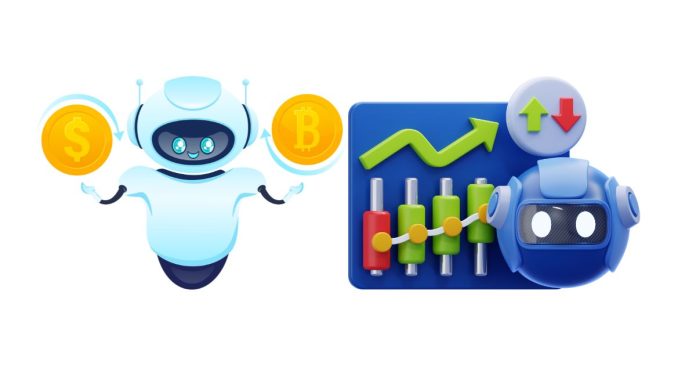The rise of artificial intelligence (AI) has revolutionized many industries, and the financial sector is no exception. AI-based trading bots have become increasingly popular in the world of stock, crypto, and forex trading. These bots use algorithms to analyze market data, identify patterns, and execute trades autonomously, often faster than human traders can react. But the burning question remains: do AI-based trading bots really deliver consistent results?
In this blog post, we’ll explore how these bots work, their potential benefits and drawbacks, and whether they can be relied upon for consistent profits.
How Do AI-Based Trading Bots Work?
AI trading bots are powered by machine learning (ML) algorithms and data analytics. They process vast amounts of market data, such as price movements, volume, and other indicators, to make informed decisions about buying and selling assets. Here’s a simplified breakdown of how they operate:
- Data Collection: AI bots gather historical data and real-time market information, including technical indicators like moving averages and relative strength index (RSI).
- Pattern Recognition: By analyzing data trends, these bots identify recurring patterns that might suggest profitable opportunities.
- Execution: Once a trade opportunity is identified, the bot executes the buy or sell order on your behalf.
- Learning and Adaptation: With machine learning, these bots improve over time by learning from past trades, adapting to market conditions, and refining their strategies.
The Benefits of Using AI-Based Trading Bots
- Speed and Efficiency: AI bots can process vast amounts of data in real-time, making them faster than humans at spotting trends and executing trades. In fast-moving markets like cryptocurrency, this speed can be crucial.
- 24/7 Trading: AI bots can operate around the clock without taking breaks. This is especially beneficial for global markets, such as forex or cryptocurrency, where opportunities arise at all hours.
- Emotionless Trading: One of the key advantages of AI bots is that they don’t suffer from emotional biases like fear or greed, which can often cloud human judgment. Their decisions are based purely on data and pre-programmed strategies.
- Backtesting: AI bots can backtest strategies using historical data, allowing traders to assess potential profitability before deploying them in live markets.
The Challenges of AI-Based Trading Bots
Despite their advantages, AI-based trading bots aren’t without their limitations. The most significant challenge is the unpredictability of markets. Here are some factors to consider:
- Market Volatility: While AI bots can perform well in stable or trending markets, they often struggle in highly volatile conditions. Sudden market shifts, news events, or black swan events (unexpected occurrences like the COVID-19 pandemic) can lead to significant losses.
- Overfitting: AI bots learn from past data, which can sometimes result in “overfitting” — where a bot’s strategy works well on historical data but fails in live trading due to changes in market conditions. A bot that was trained on one set of data may not perform consistently if the market evolves.
- Lack of Human Intuition: AI bots rely on algorithms and statistical analysis, but they lack human intuition, which can be essential for interpreting market sentiment, geopolitical events, or complex financial situations that are hard to quantify with data.
- Dependence on Data Quality: The effectiveness of AI trading bots heavily depends on the quality and accuracy of the data they are trained on. If the data is flawed or incomplete, the bot’s decisions could lead to poor outcomes.
Can AI-Based Trading Bots Deliver Consistent Results?
The key to understanding whether AI trading bots can deliver consistent results lies in recognizing that they are tools — not foolproof money-making machines. Here’s a breakdown:
- Market Conditions Matter: In trending or stable markets, AI trading bots can often generate consistent profits. However, in choppy, volatile conditions, they may struggle or make unprofitable trades.
- Quality of the Bot: Not all AI bots are created equal. The algorithms behind the bot, the data it analyzes, and the strategies it employs all play a significant role in its performance. A well-designed bot with advanced machine learning capabilities may perform better over time compared to simpler bots.
- Risk Management: Even the best bots cannot guarantee profits. Implementing proper risk management strategies, such as stop-loss orders and diversification, is crucial to mitigating losses.
In summary, AI-based trading bots can be powerful tools for traders, offering speed, efficiency, and emotionless decision-making. However, they are not infallible and may not always provide consistent results, especially in unpredictable markets. For long-term success, traders should use these bots as part of a broader strategy that includes proper risk management, ongoing evaluation of bot performance, and an understanding of market conditions.
AI-based trading bots are best viewed as a complement to human trading, rather than a replacement. When used wisely, they can enhance your trading strategy and improve your chances of success. But like all forms of trading, there’s no guarantee of consistent profits — the markets remain unpredictable, and no technology can completely eliminate risk.


